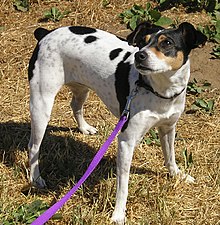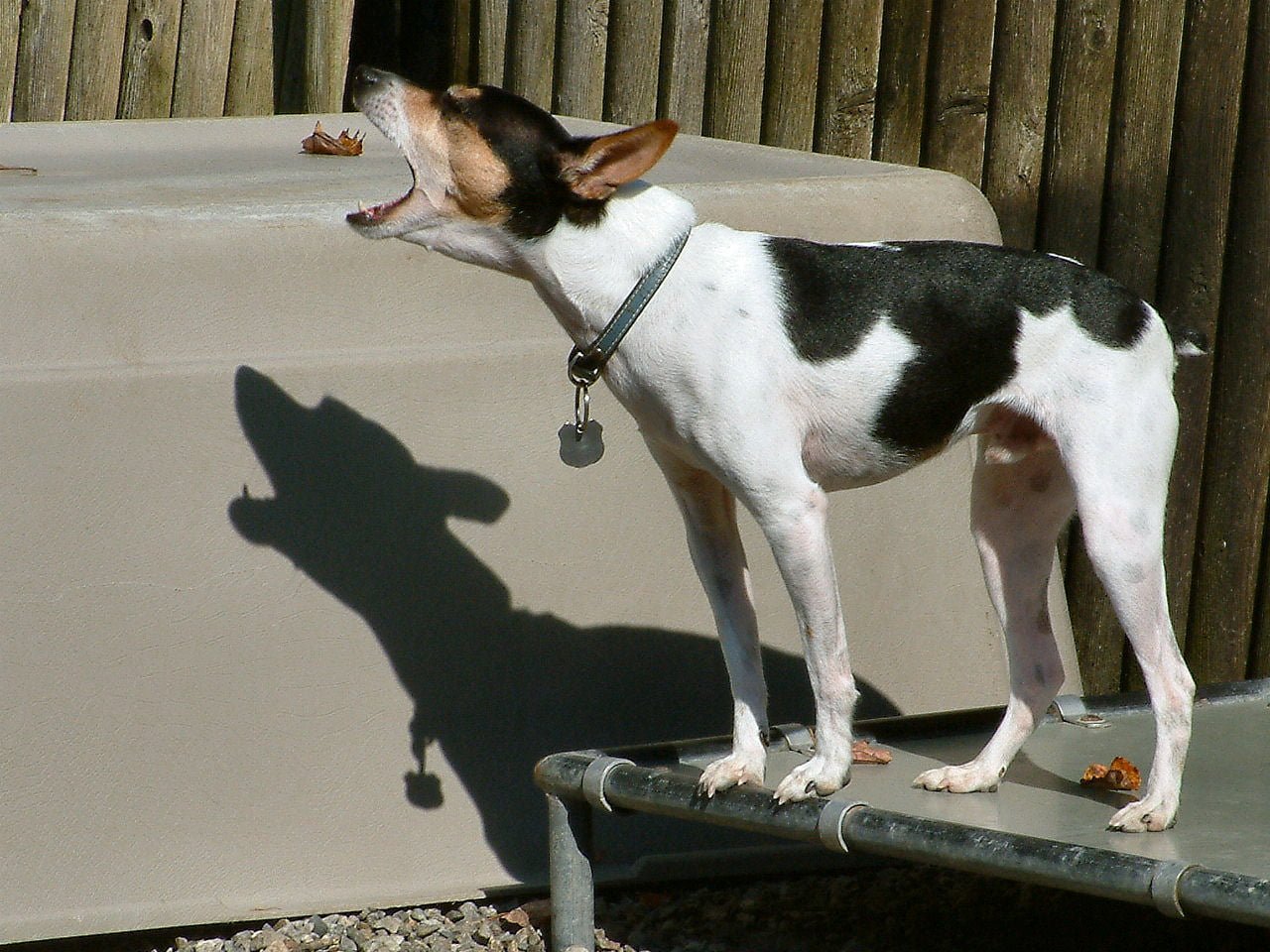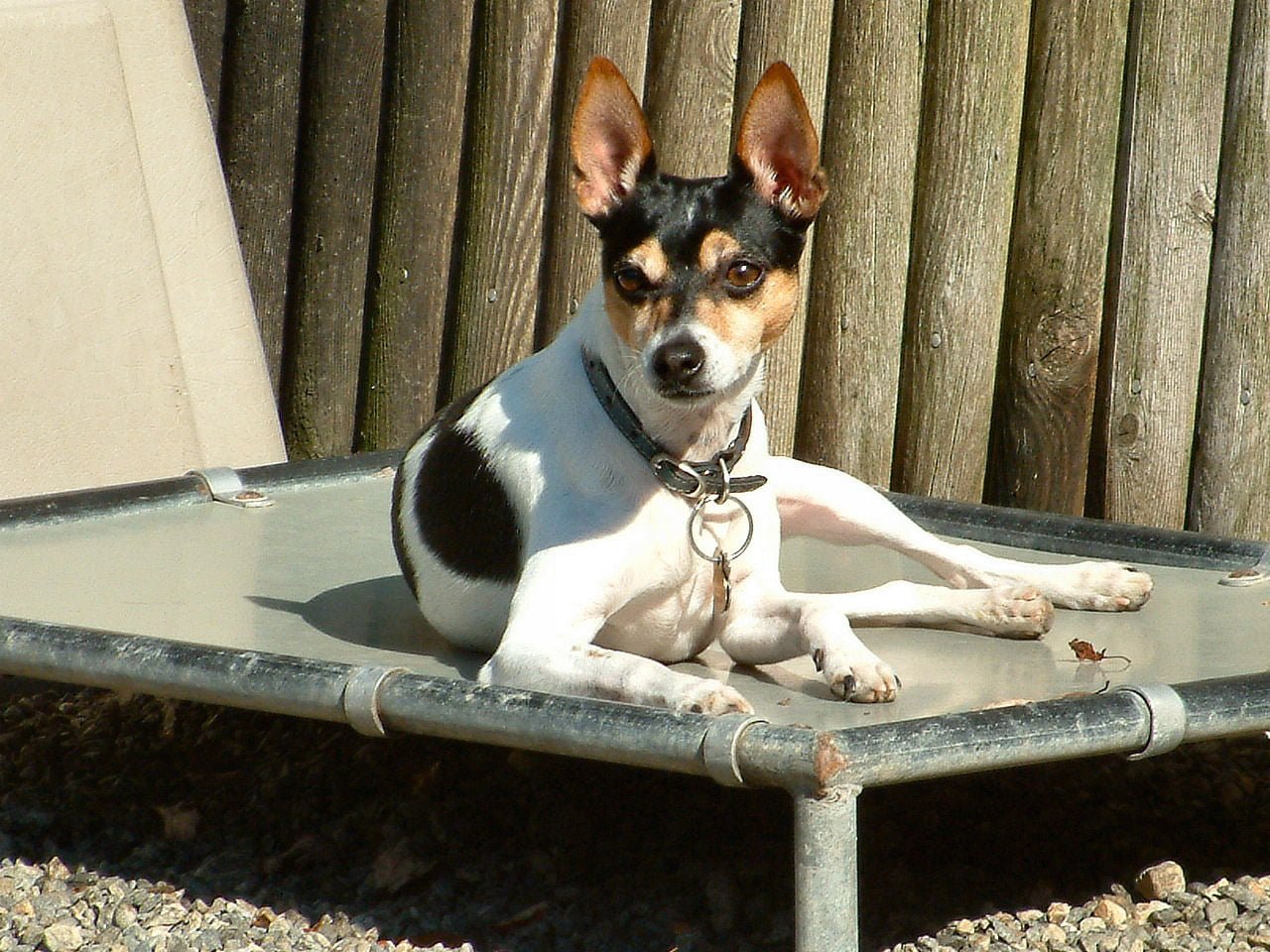
Sprightly and tenacious, the Rat Terrier is an American breed with a legacy rooted in farm life. Initially developed to catch vermin and protect homesteads, its sharp instincts and agile physique made it a valuable asset to farmers. Compact yet sturdy, the Rat Terrier displays a patchwork of colors and patterns on its short coat, with an expression always alert to its surroundings. Renowned for its intelligence, energy, and unwavering loyalty, this breed has evolved from a farmhand’s helper to a cherished family member, beloved for its spirited personality and enduring charm.
The Rat Terrier is a member of the AKC Terrier Group.
Breed Characteristics
| Dog Breed | Rat Terrier |
| Breed Popularity (AKC) | 85 |
| Country of Origin | United States of America (USA) |
| Personality | Friendly |
| Life Expectancy | 12-18 yrs |
| Height | 10-18 in |
| Weight | 10-25 lbs |
| Color | Black & White, Black White & Tan, Black Tan & White, Black White & Tan, Red White & Tan, Red White & Sable, White & Apricot, White & Black, White Black & Tan, Wite & Blue Fawn, White & Blue, White & Chocolate, White Chocolate & Tan, White & Fawn, White & Lemon, White & Red, White & Silver, White & Tan, White |
| Coat | Single, smooth |
| Shedding | Seasonal |
| Grooming | Weekly Brushing |
| Health Problems | Patellar luxation |
| Trainability | Easy Training |
| Exercise Needs | Regular Exercise |
Rat Terrier History
Developed in the USA, the Rat Terrier is a blend of various terriers including the Old English White Terrier, Manchester Terrier, and others, combined with Beagle, Whippet, and Italian Greyhound. Bred primarily for ratting and farm work, they gained popularity in the early 20th century. With their intelligence and tenacity, these dogs were essential for farmers in keeping their properties free from pests.
Temperament
Rat Terriers are energetic and sharp-witted. They were bred for farm work and have a high prey drive. They display good trainability due to their intelligence. Their behavior is generally friendly, but they can be assertive if not properly socialized. They have a high energy level, requiring regular exercise. Early socialization is key, especially around smaller animals. Their barking tendencies are moderate, often used for alerting or when on the hunt.
Remember, while breed traits provide a general idea, individual dogs can have personalities that differ from the breed standard. Always spend time getting to know the dog and ensure their needs and temperament align with your lifestyle.
Grooming Requirements
Rat Terriers have a short, smooth coat that’s low-maintenance. Occasional brushing helps to remove loose fur and distribute natural skin oils. Bathing with a mild dog shampoo when necessary is adequate. Key grooming tasks for this breed include regular nail trimming, ear cleaning, and dental care.
Rat Terrier Health
Rat Terriers, living 12-18 years, can be prone to conditions like patellar luxation. Regular health checks, vaccinations, and flea prevention are vital. Their diet should be high-quality dog food, and attention to potential allergies can ensure a healthy life.
Exercise Needs
Rat Terriers are lively and require regular walks, fetch games, and structured play sessions. They’d benefit from dog park visits for playtime and socialization. Their energetic and intelligent nature makes them apt for agility courses, offering a great way to bond and channel their energy.
Training
Rat Terriers, known for their intelligence and agility, thrive under consistent obedience training. Commands play a crucial role in potty training and nurturing their keen instincts. Crate training offers a secure space, especially after active sessions. Addressing behavior problems related to their prey drive is vital. Regular socialization ensures they’re adaptable and amiable in diverse situations.
Rat Terrier Pictures



Related Dog Breeds
More Dog Resources
Are you thinking about getting a puppy? Make sure to check out our list of important questions to ask before you adopt a puppy.
We also have many resources to help, from naming your puppy to socialization resources and training tips.
Take me back to the Ultimate Guide to Dog Breeds



